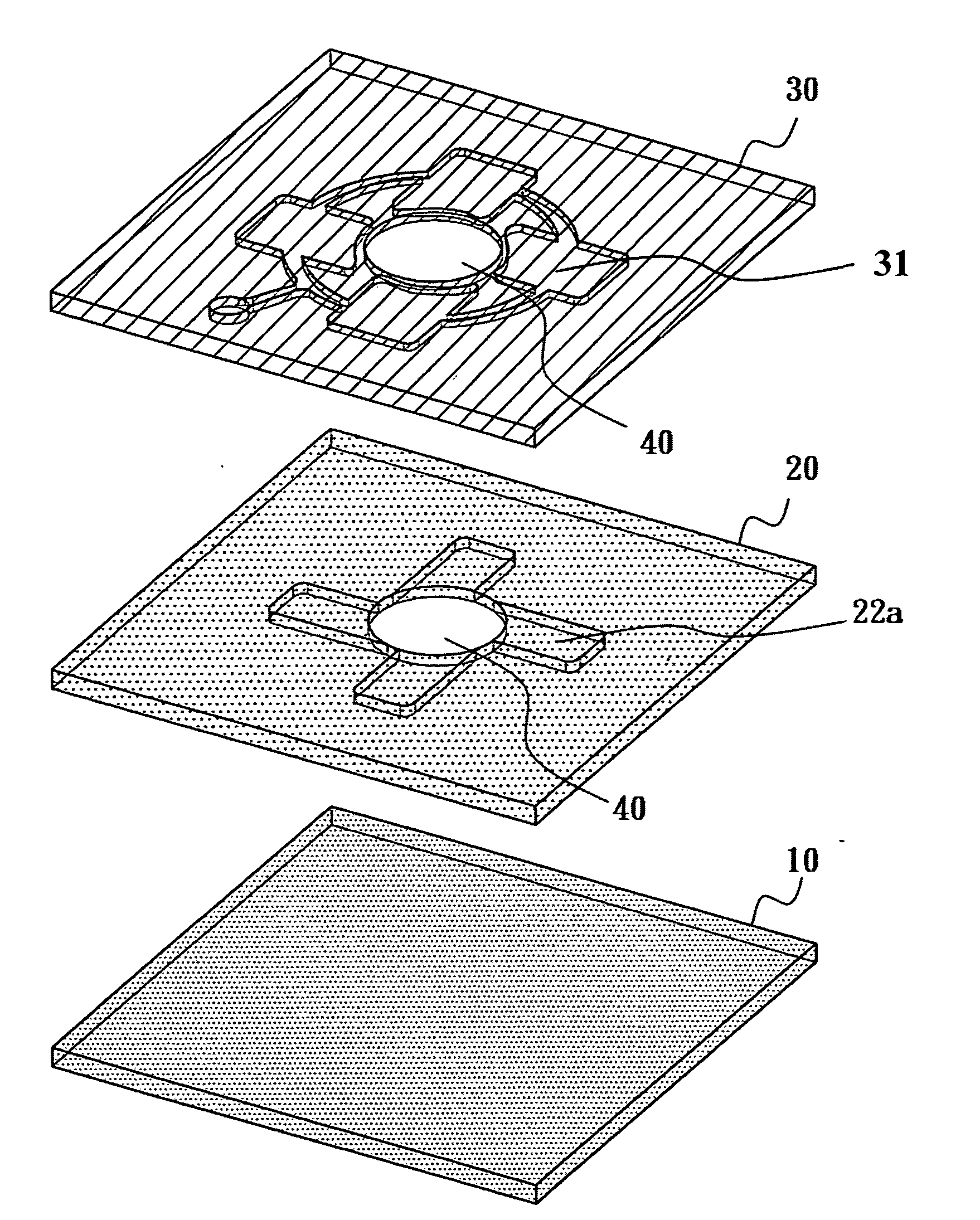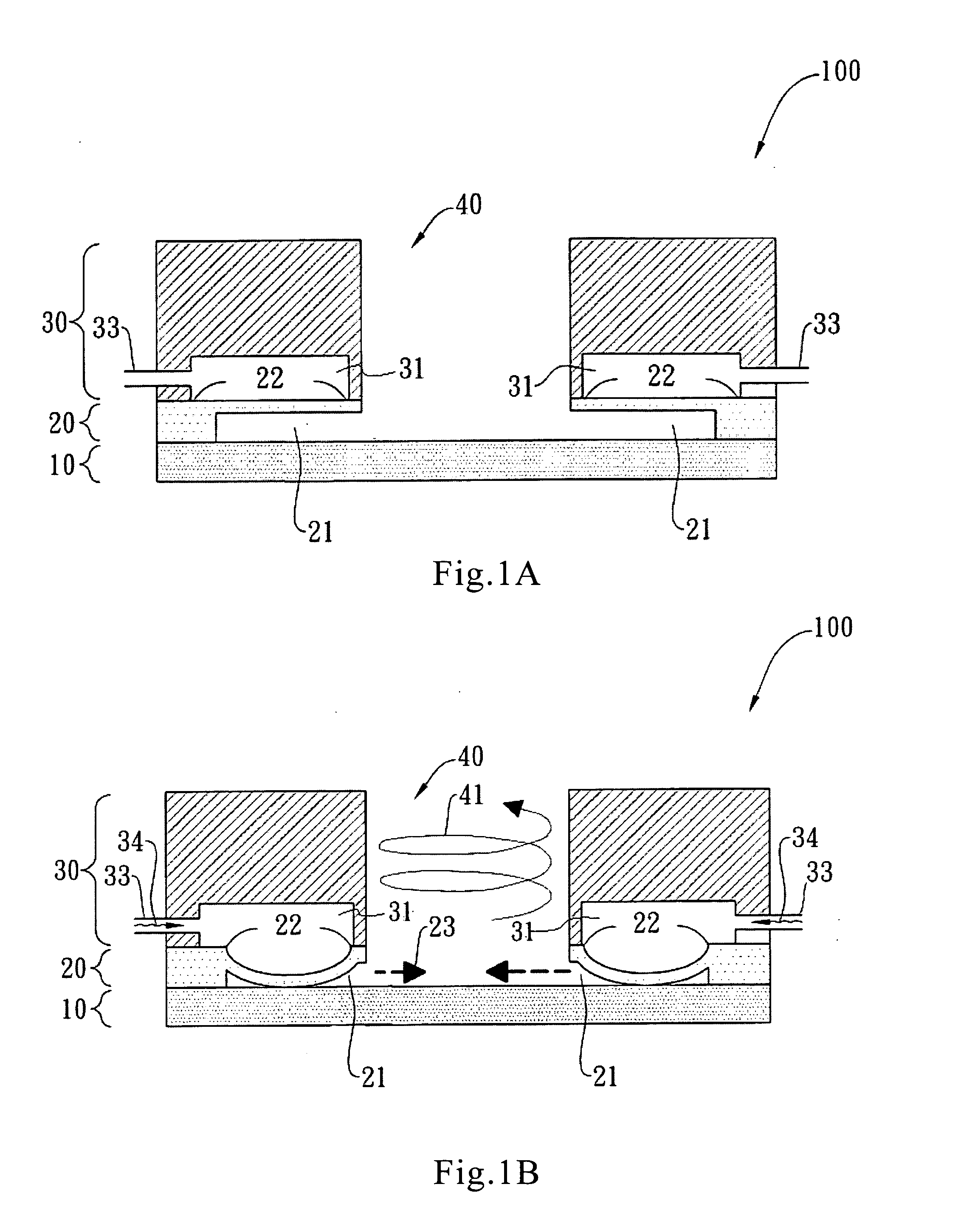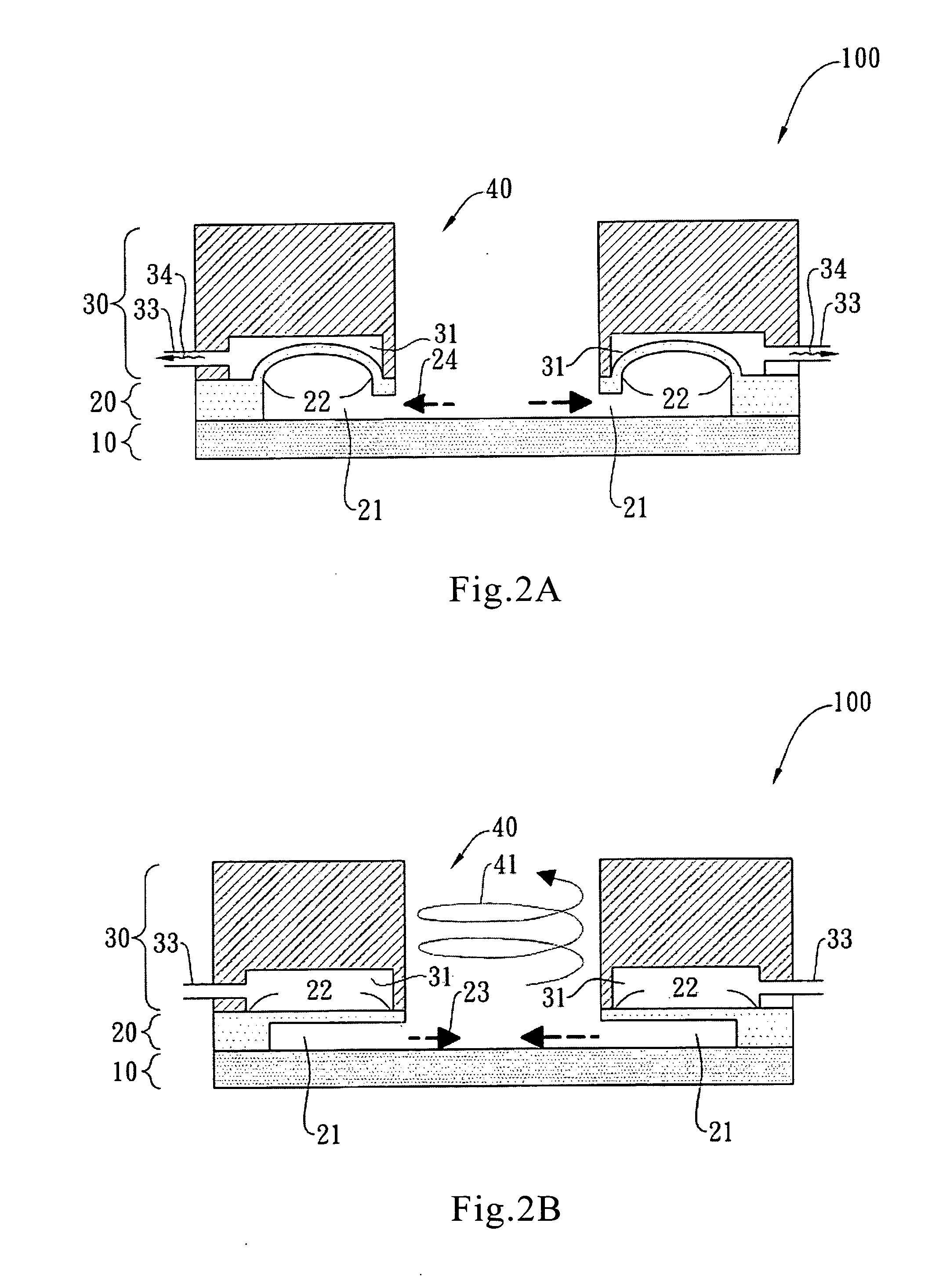Micromixer biochip
a micro-mixer and biochip technology, applied in the direction of mixing, transportation and packaging, chemistry apparatus and processes, etc., can solve the problems of consuming a great amount of substances, consuming a great amount of time, and the mixing technique is not favorable to biochemical applications
- Summary
- Abstract
- Description
- Claims
- Application Information
AI Technical Summary
Benefits of technology
Problems solved by technology
Method used
Image
Examples
example 1
Mixing Efficiency of a Micromixer Biochip Including Four Single-Opening Fluidic Channels
[0041]To evaluate the mixing performance of a micromixer biochip of the present invention, two fluid samples, including red ink and deionized water, are used to demonstrate the mixing process in this embodiment. FIGS. 8, 9, and 10 are referred to for illustrating the mixing process; FIGS. 1 and 7 are referred to for identifying the component numerals of the micromixer biochip.
[0042]FIG. 8 shows a series of photographs for verifying the mixing performance of a micromixer biochip that includes four single-opening fluidic channels; the performance of mixing the deionized water and red ink samples with the same applied pressure at different times are observed. The circular mixing chamber is first loaded with deionized water of 40 μL, and one single-opening fluidic channel is loaded with red ink of 2 μL. The air being injected to the micromixer biochip has an applied pressure of 10 psi and a driving f...
PUM
 Login to View More
Login to View More Abstract
Description
Claims
Application Information
 Login to View More
Login to View More - R&D
- Intellectual Property
- Life Sciences
- Materials
- Tech Scout
- Unparalleled Data Quality
- Higher Quality Content
- 60% Fewer Hallucinations
Browse by: Latest US Patents, China's latest patents, Technical Efficacy Thesaurus, Application Domain, Technology Topic, Popular Technical Reports.
© 2025 PatSnap. All rights reserved.Legal|Privacy policy|Modern Slavery Act Transparency Statement|Sitemap|About US| Contact US: help@patsnap.com



